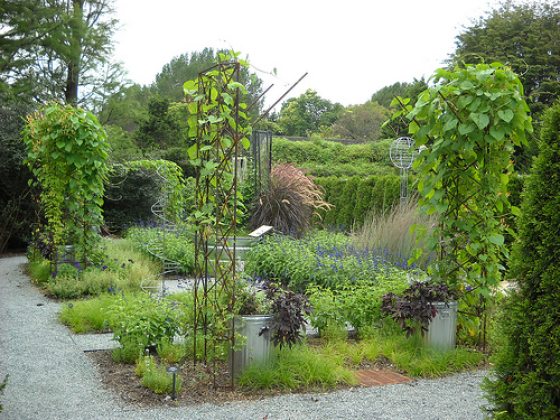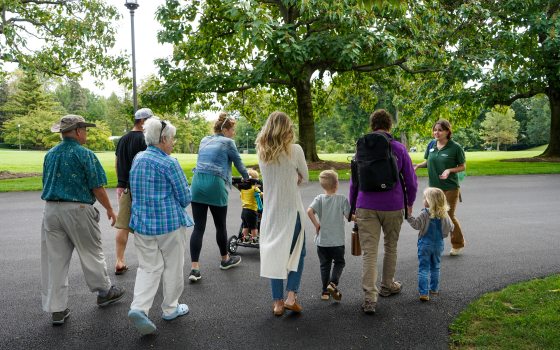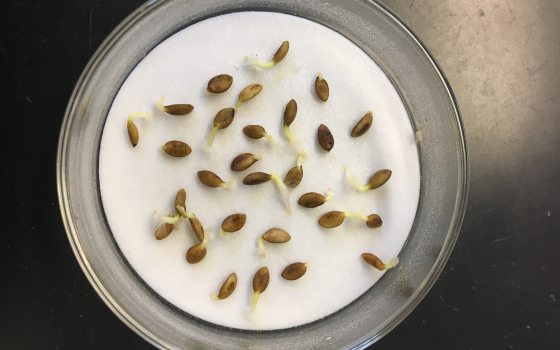If you haven't visited the Student Exhibition Garden, time is running out! The gardens will be dismantled in October to make way for the PG class of 2011's gardens next spring. To find out more about the Student Exhibition Gardens, visit Longwood's website at www.longwoodgardens.org.
Before you read on I want you to do something: Step outside, close your eyes, and take a whiff. What do you smell? More accurately, wheredo you smell? Now do that with each place that you visit in the course of a day, week, or month. You just might be surprised to find that each place has a different olfactory essence that you come to associate with that specific location.
When I get off a plane in my native Los Angeles I can tell it's LA because of the way it smells (car exhaust and sun-baked pavement seasoned with a hint of sea salt.). LA smells different from New York, which smells different from London, which smells different from Barcelona, which smells different from Philadelphia. To me, each place has a uniquely identifiable scent that provides a sense of where I am. This clearly identifiable feature of a geographic location was the concept behind the Student Exhibition Garden, "A Scents of Place."
When my partner in design Shannon and I started discussing concepts for the garden during our Landscape Design course we knew our design had to conform to Longwood's theme of Fragrance. Fragrant plants were a given, but we had to develop a theme of our own - a context within which to place the plants we chose.
Following the design guidelines that our instructor Dan Maffei taught us, we developed a concept drawing with one major and two minor focal points. We knew we wanted to use plants and materials that would provide a variety of textures and heights in the focal points, but hadn't yet determined what those plants and materials would be. As we doodled, one of us commented that the drawings looked like the skyline of a city. And cities, as we've already determined, smell.
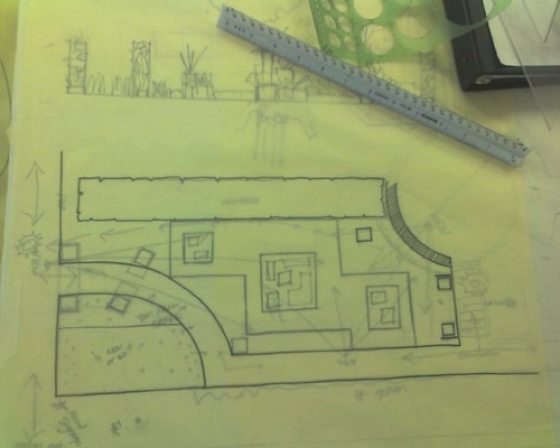
That was our "a-ha!" moment. We decided our design would be a cityscape of fragrant plants. With some help from Dan and lots of creative brainstorming, we finally landed on the title for our theme. That's when the design process took a decidedly creative turn and the real fun began! What if we built our city with some new but mostly reclaimed, recycled, and used materials? What if we designated that our structures be made of metal to mimic the shiny reflections of glass on highrise buildings? What if some of them were in various stages of repair or decay, just as buildings and neighborhoods in most cities are found? And what if we added some whimsy by using aluminum trash cans as planted containers (if only all trash receptacles smelled so nice!)? We began referring to our focal points as "downtown" and "the 'burbs." We printed photos of city skylines for inspiration (reflective downtown skyscrapers, industrial centers with steam-belching chimneys, even a nuclear power plant) and began jotting down ideas for the plants we would use.

Taking off with the idea of elements in different stages of construction or decay, we designed a series of arches that are placed to frame views of our garden. One arch joins the main garden plot with a small sliver of ground on the other side of the existing path and serves as a formal entrance to the garden, conveying the message "you are entering a different place". The next arch frames our main focal point but instead of being a complete arch, part of the top is missing. The third is simply a pair of uprights, waiting for the overhead piece to be put into place. All are draped in Mina lobata (Firecracker Vine) for its fiery color and season-long bloom and Ipomoea alba (Moonflower) for its heady evening scent. Since the Student Exhibition Garden is meant to provide us with 'real world' experience in designing, constructing, and maintaining our gardens, we were responsible for procuring every plant and material called for our in our design. This presented quite a challenge; where were we going to find three arches like the ones we envisioned, not to mention some of the other pieces we wanted to shape our city? Enter the talent of Longwood's craftsmen, specifically Dave in the metal shop, and Koa, one of the gardeners who trains the fabulous forms for Longwood's Chrysanthemum Festival. We approached Dave with several sketches of our arches and asked if he could fabricate them. After a few discussions detailing the exact gage of rebar, criss-cross pattern on the uprights, and suggestions on how to make them more structurally stable, he began working. Next we asked Koa if we could borrow some of his unused mum forms and he graciously allowed us to 'shop' in the nursery storage barn. A few visits to the metal shop scrap heap provided some valuable finds, as well, fulfilling our goal of using reclaimed, recycled, and new materials. Within days the arches were complete and we installed all the metalwork, instantly bringing our design to life. Without Dave and Koa's help, our garden wouldn't have the distinctive character that it does!
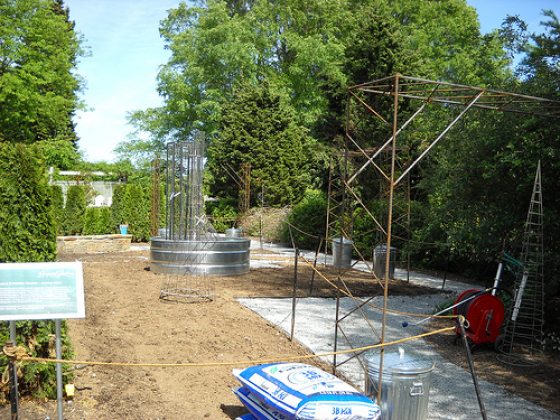
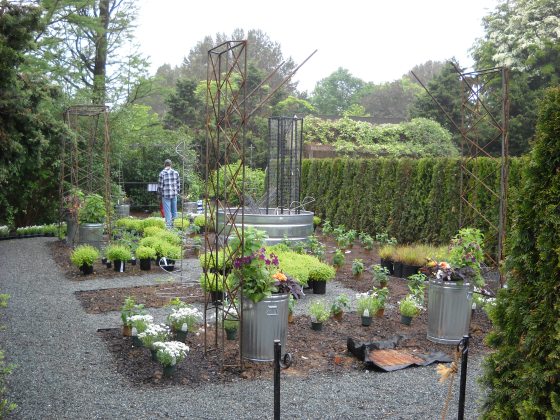
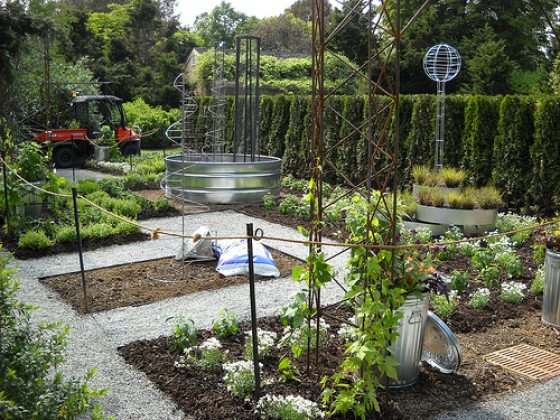
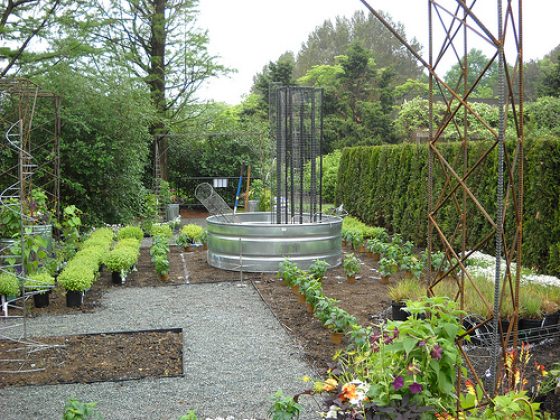
Choosing the plants involved some investigation - we needed plants that were fragrant (either flower or foliage), that would bloom throughout most of the six-month season the garden would be in place, and that would be right for the site's environment and microclimate. In the end, we chose sweeps of Heliotropium arborescens ‘Marine’, Calamintha nepatoides ‘White Cloud’, Salvia guaranitica ‘Black and Blue’, Nemesia fruticans ‘Compact Innocence’, Carex pennsylvanica (Pennsylvania Sedge), an heirloom Lablab purpureus (Purple Hyacinth Bean), and a collection of colorful annuals and perennials including Bee Balm and Chocolate Mint for the containers. Even with the brutal summer heat and scant rainfall, all have done remarkably well in our morning sun/afternoon shade garden with moderate watering and fertilizer.
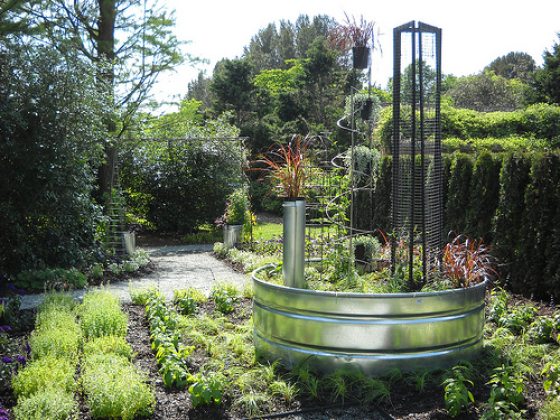
The garden is now at its peak, with the vines threatening to twine themselves around anything - or anyone - within reach, the Heliotrope, Salvia, and Nemesia have refused to stop blooming, and the Carex has become my favorite native no-mow lawn. We've only recently changed out the containers with plants that will bloom from now through fall. The gardens were officially dedicated at a party hosted by Longwood's Director, Paul Redman, on September 1. It was quite an honor to be among Longwood staff and fellow students celebrating and recognizing the creativity and hard work that went into the very first display gardens designed and created by Professional Gardener Students.
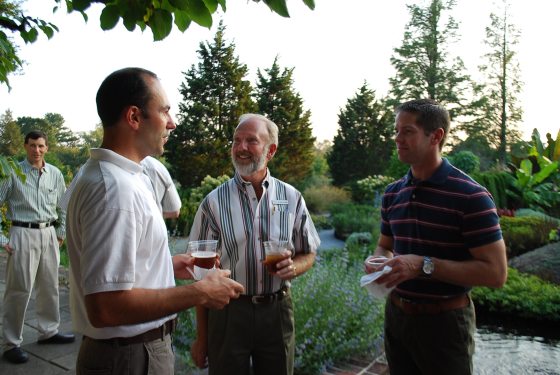
If you haven't visited the Student Exhibition Garden, time is running out! The gardens will be dismantled in October to make way for the PG class of 2011's gardens next spring. To find out more about the Student Exhibition Gardens, visit Longwood's website at www.longwoodgardens.org.
